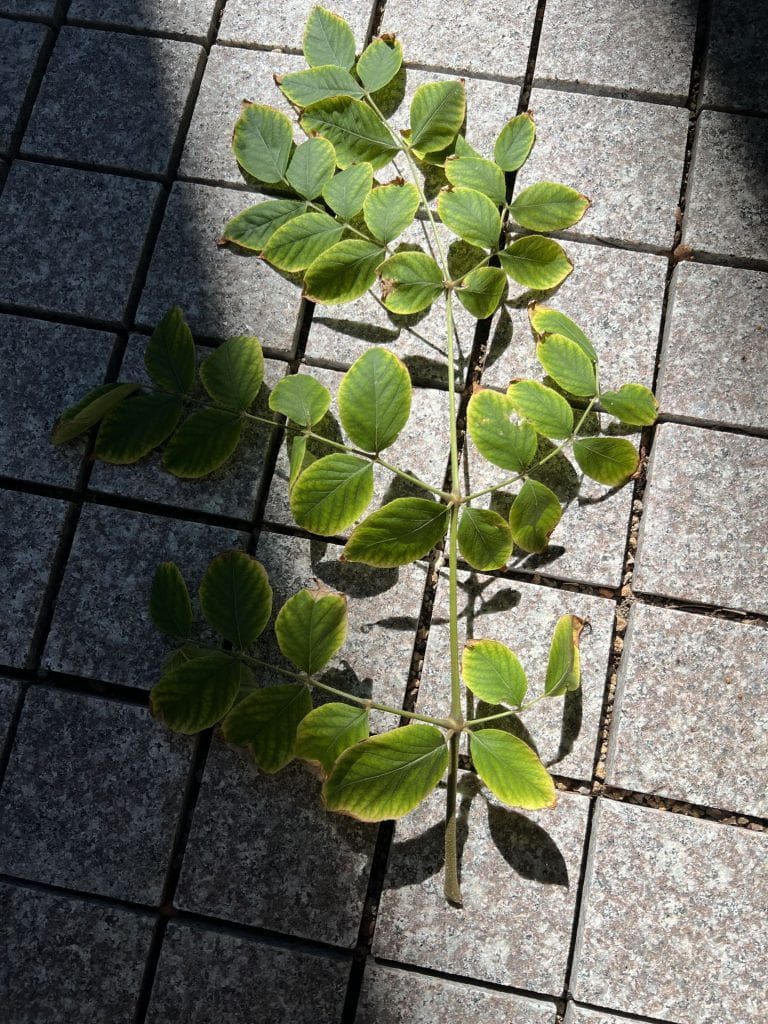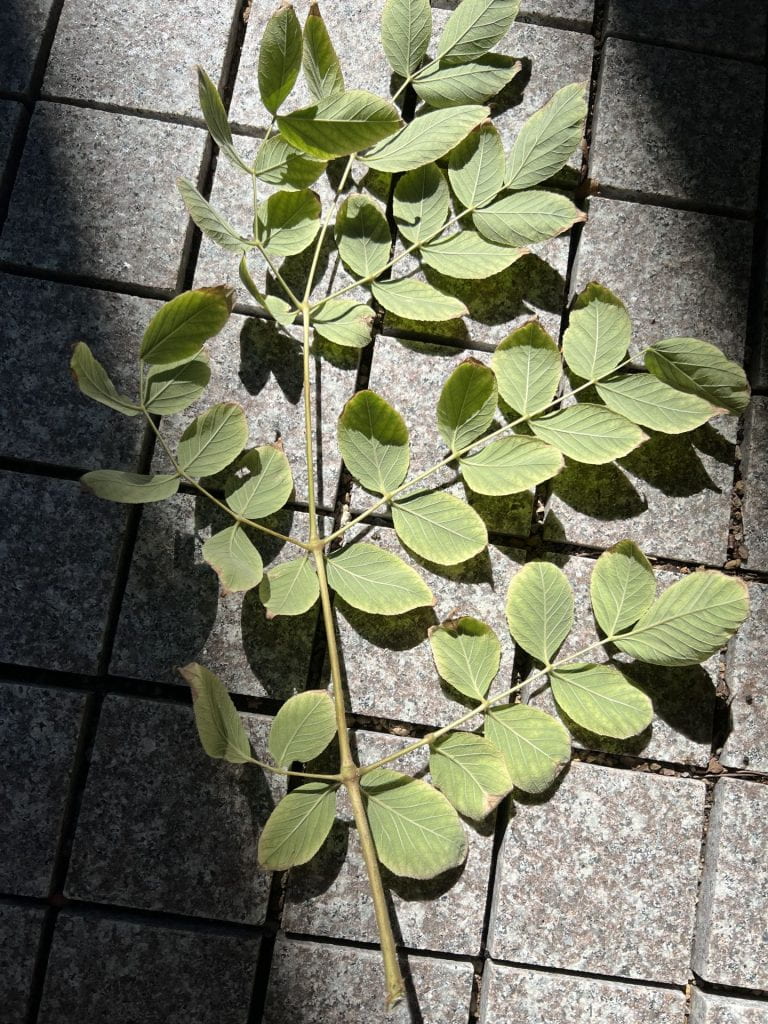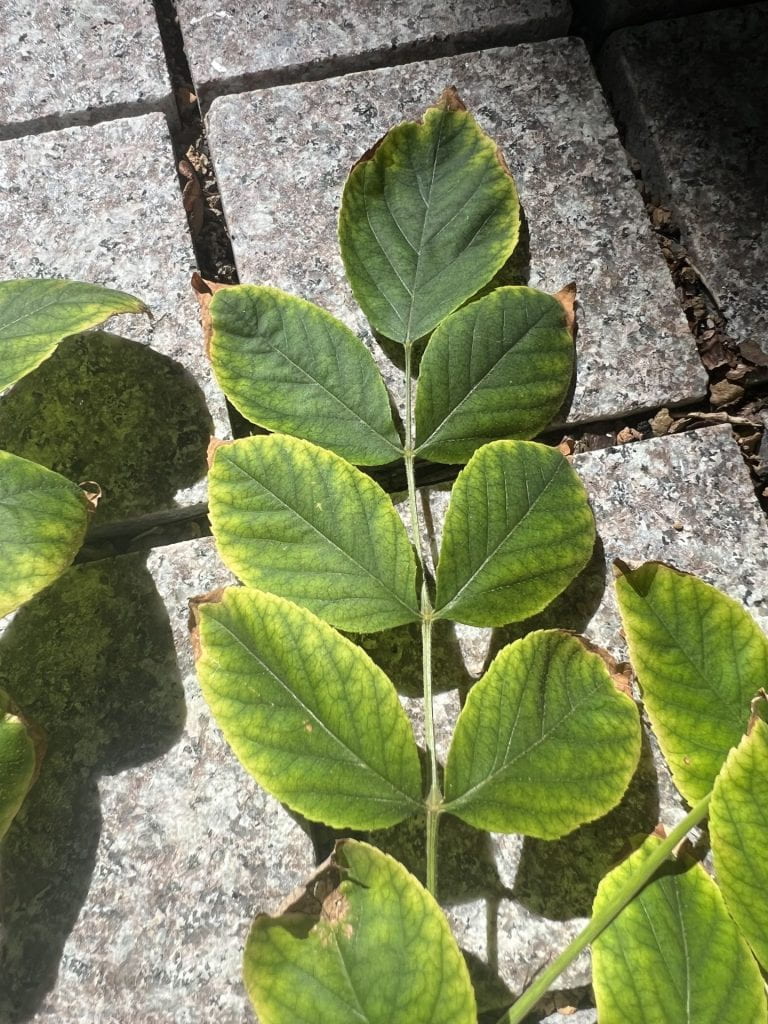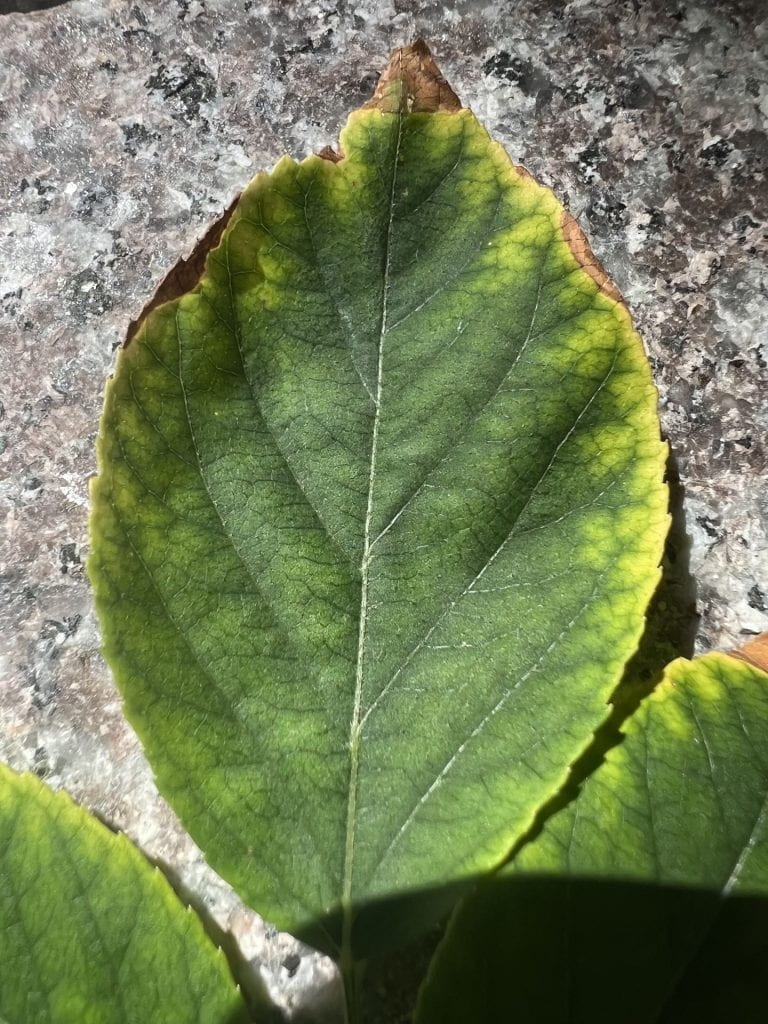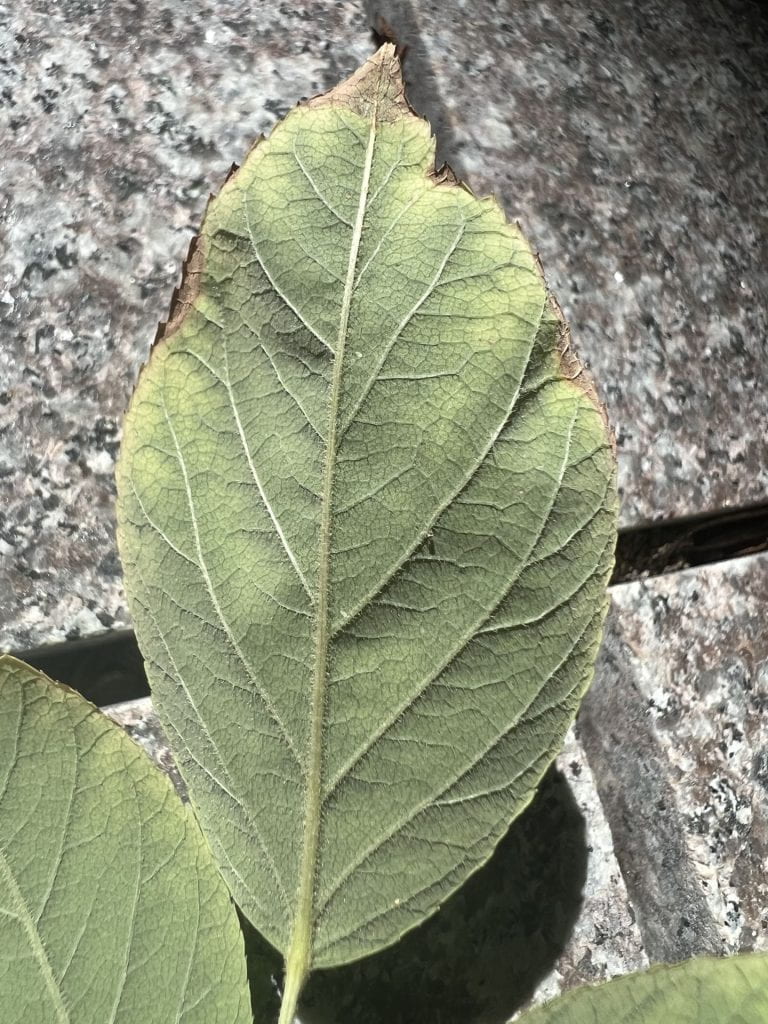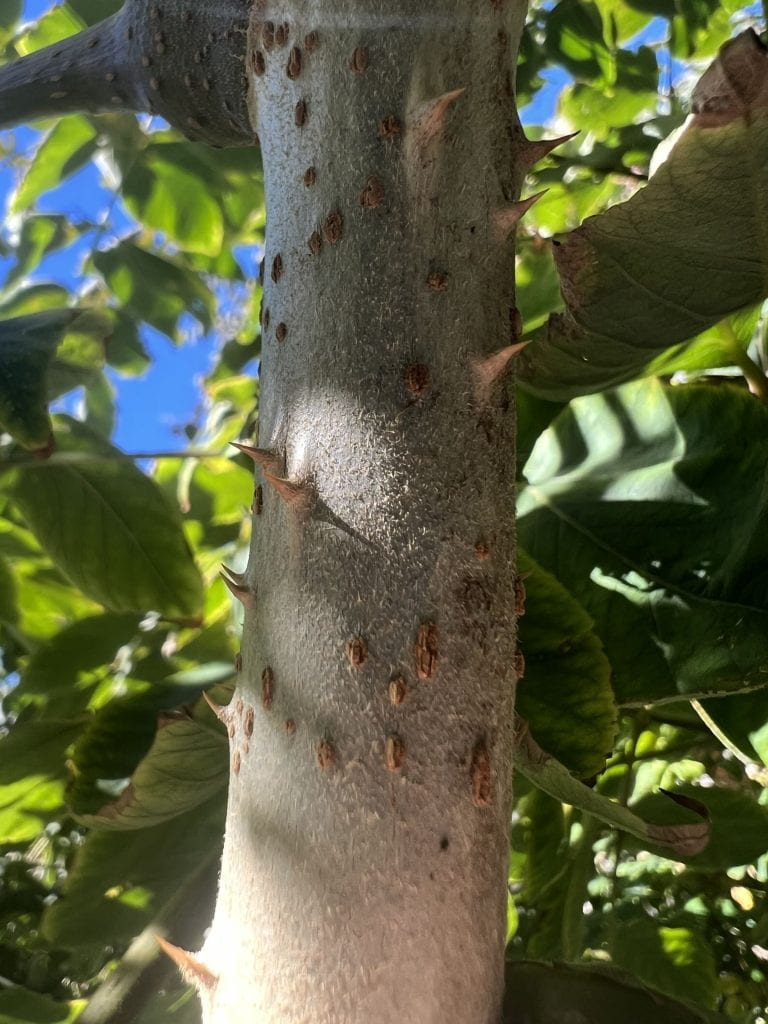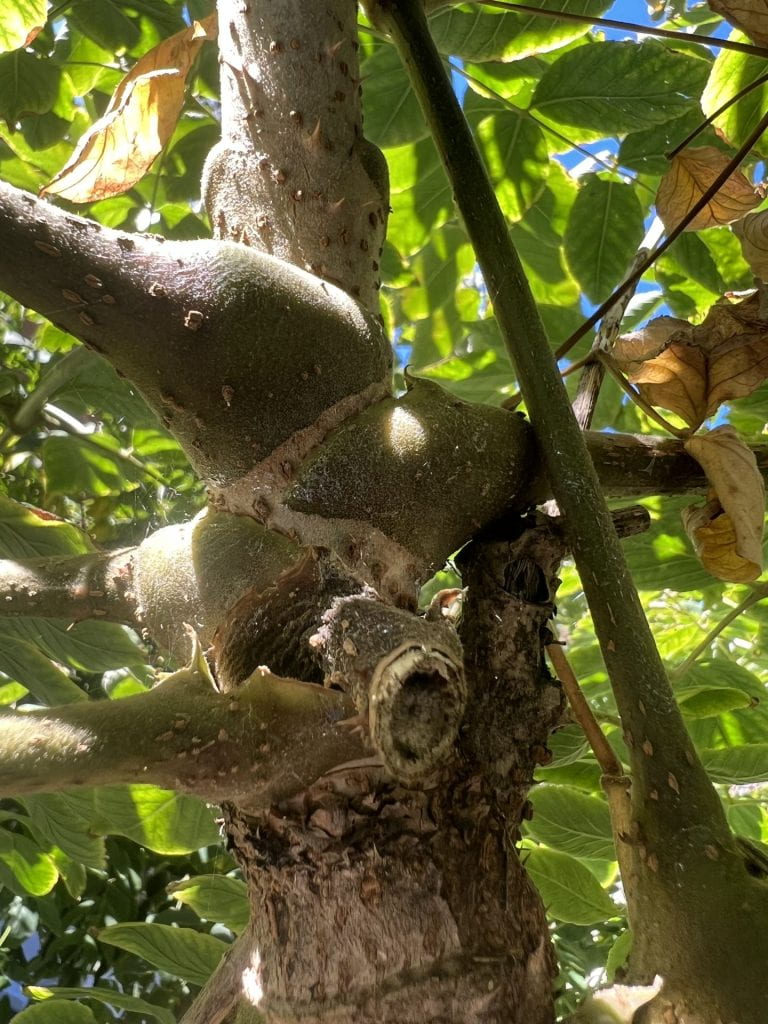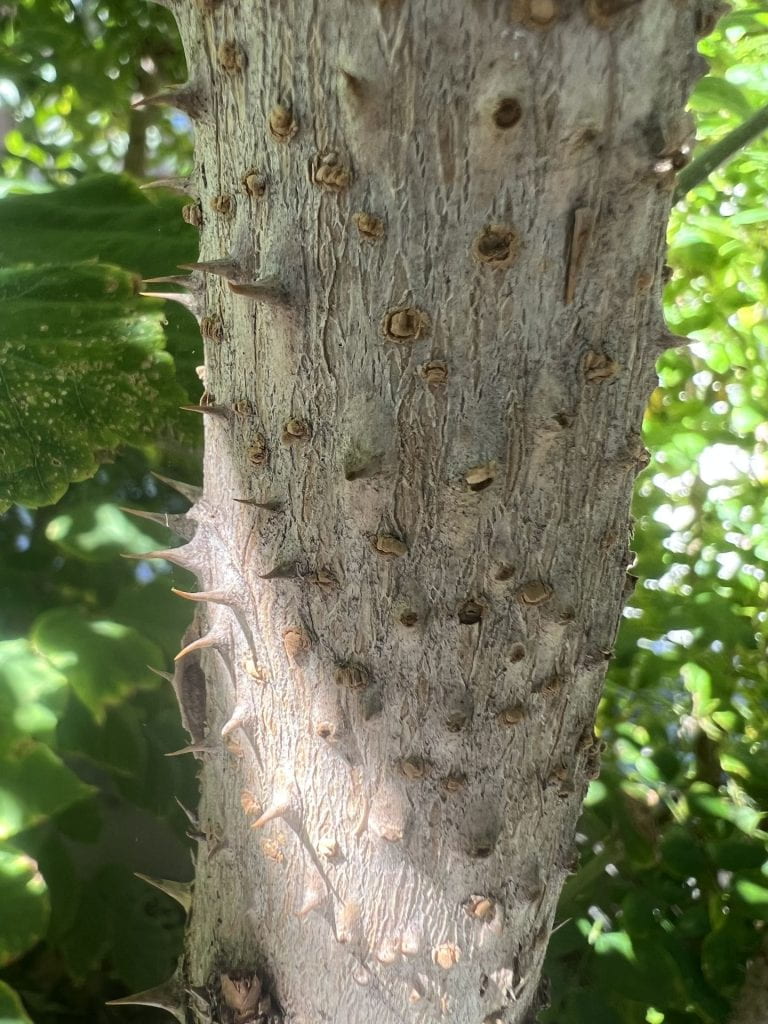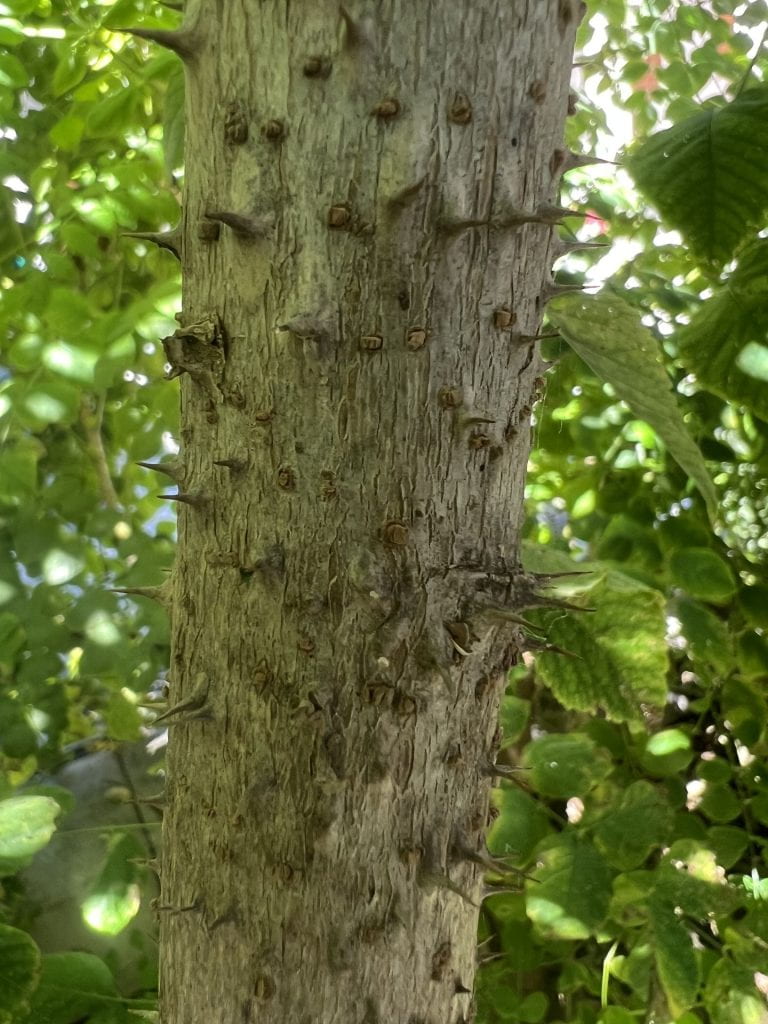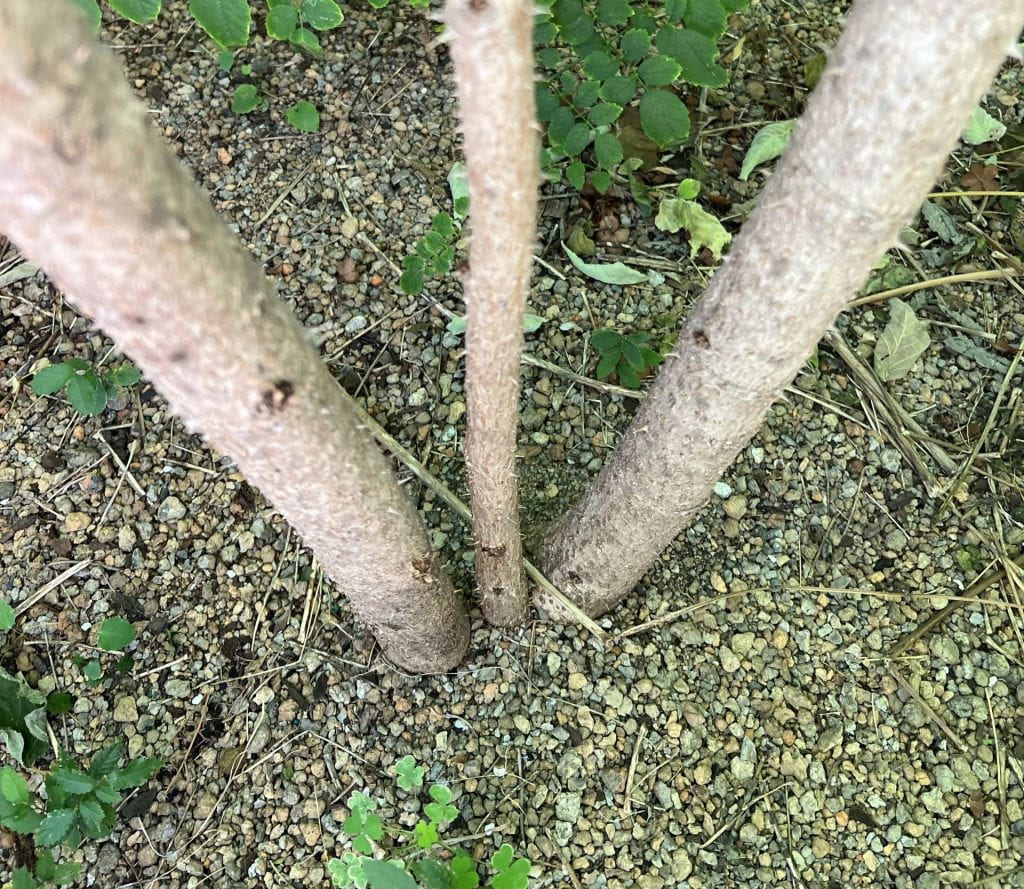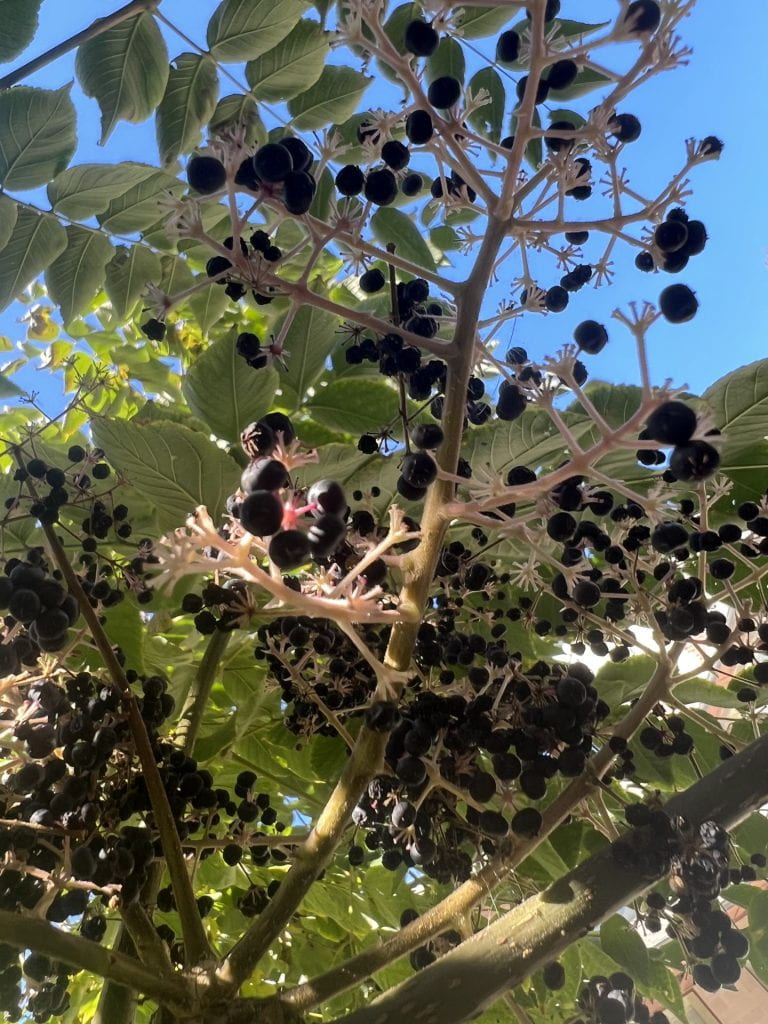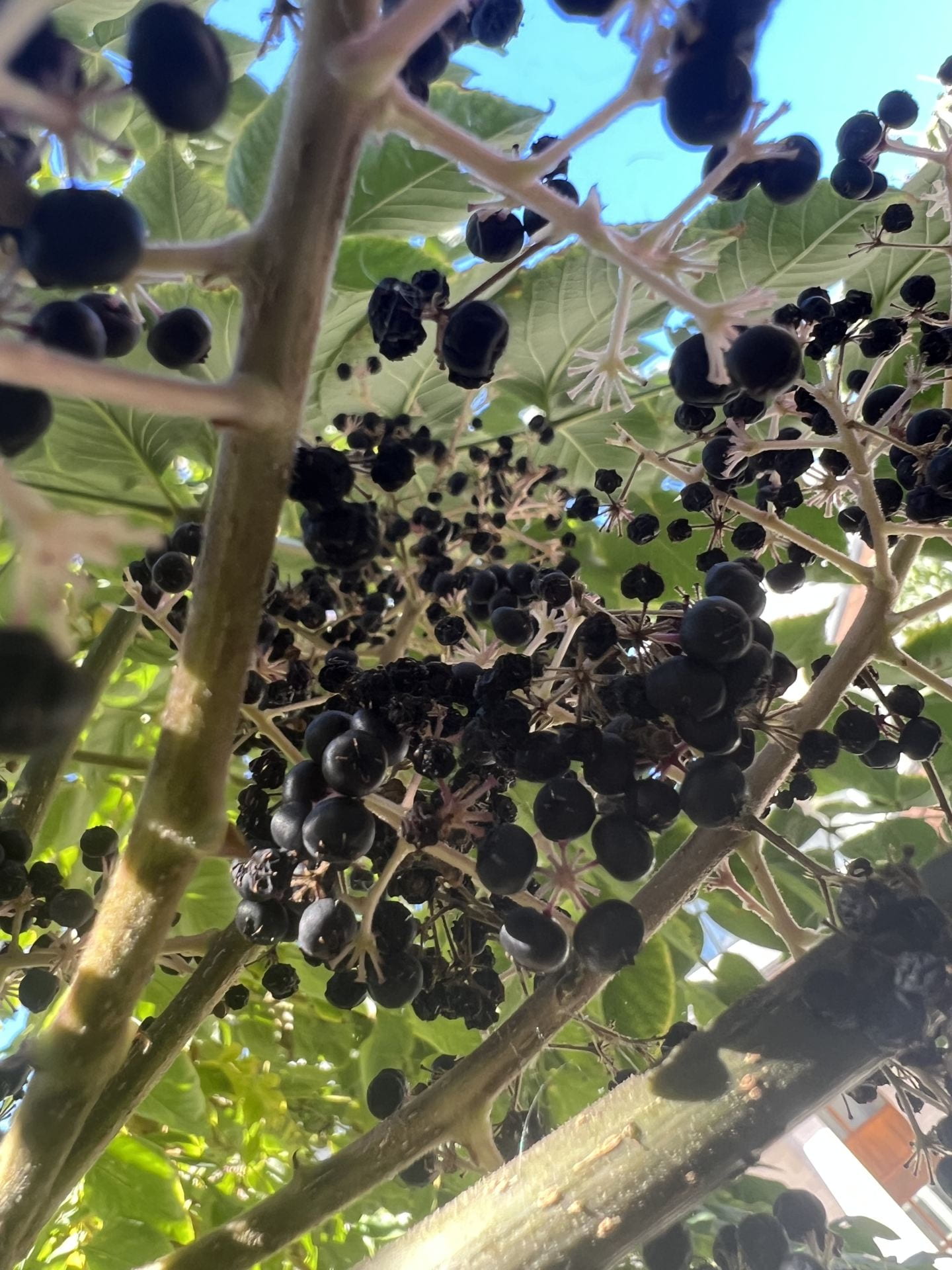Devil’s Walking Stick
Arbor Walk #121, TreeKeeper ID #4652
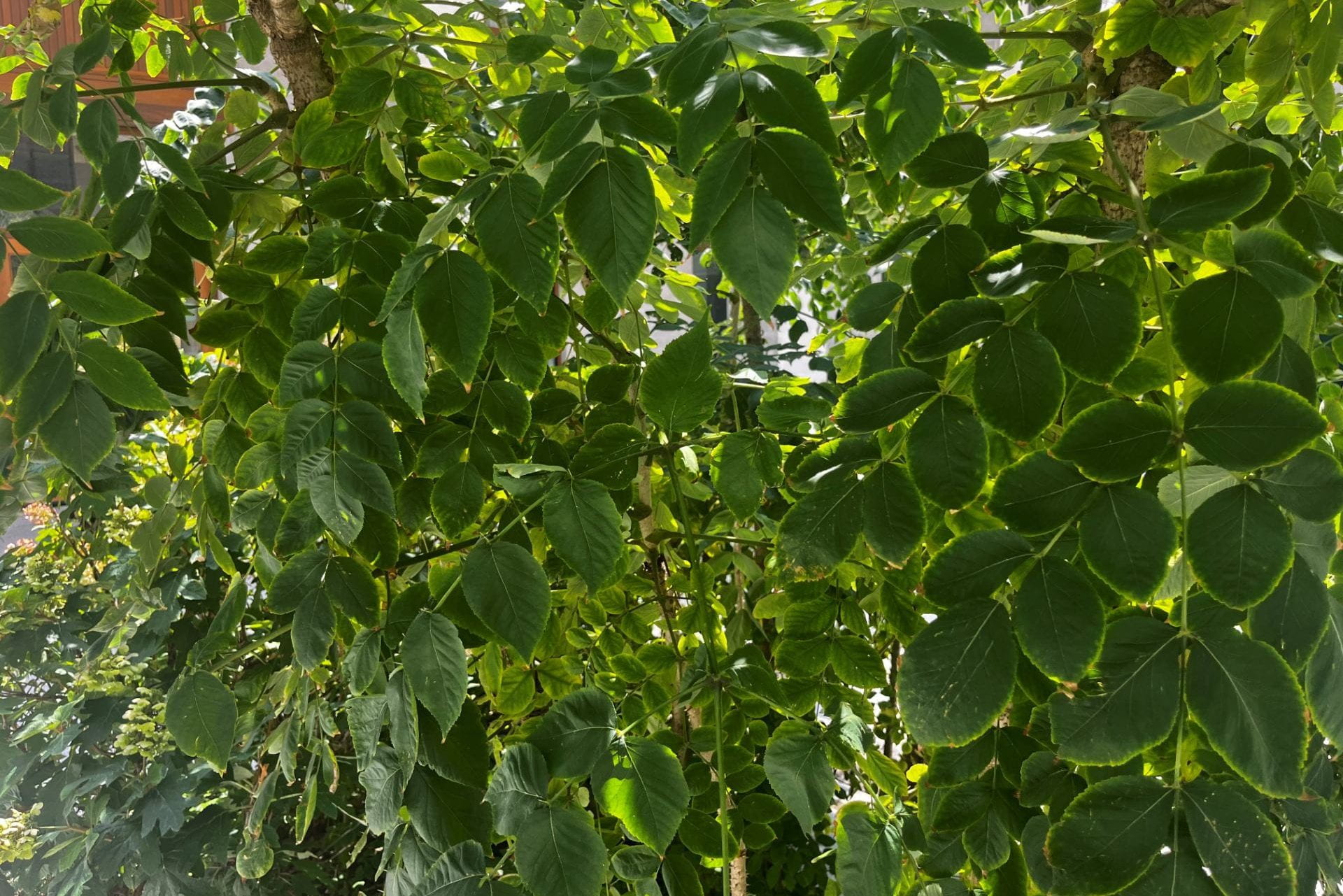
This tree has many interesting features including late summer flowers, juicy black drupes, gigantic compound leaves, and sharp prickles covering many parts of the plant.
The white flowers grow in 2′ long clusters that really stand out in urban settings. These flowers are replaced with equally impressive cluster of black, spherical fruit. Then the massive bipinnately to tripinnately compund leaves are the largest leaves in continental North America at 5′ long and 4′ wide. Lastly, the spines covering the leaf stalks, stems, branches, and bark are also a stand out, but be careful! These spines are very sharp and will hurt if you are punctured.

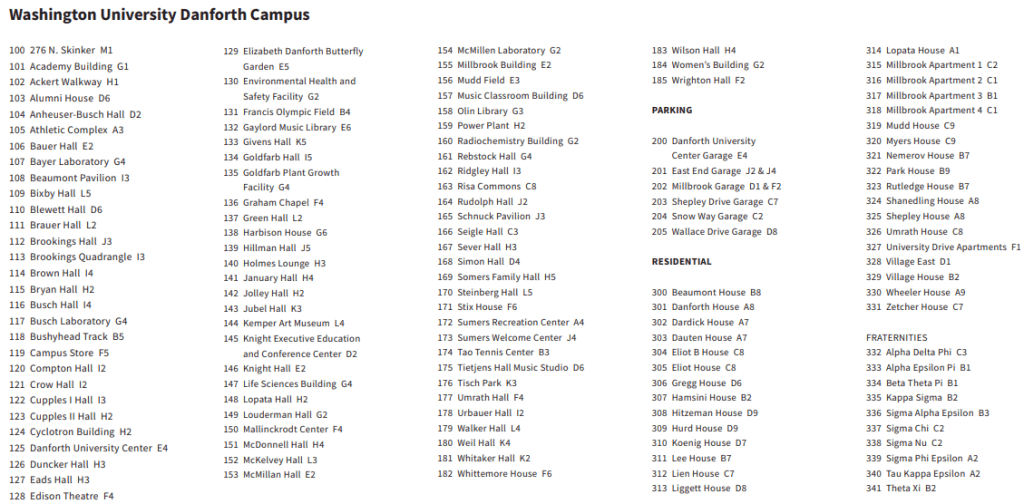
GPS Coordinates
N/A
Percent Concrete
N/A
Distance to Buildings
| Year | Close Building #1 | Close Building #2 | Close Building #3 |
|---|---|---|---|
| 2023 | Bauer Hall, 2.63 m | Knight Center, 9.82 m | N/A |
Distance to Other Species
| Year | Close Species #1 | Close Species # 2 | Close Species # 3 |
|---|---|---|---|
| 2023 | Devil’s Walking Stick, 1.00 m | Devil’s Walking Stick, 1.17 m | Devil’s Walking Stick, 1.72 m |
Standard Measurements
| Year | Height (m) | DBH (cm) | Crown Diameter N-S (m) | Crown Diameter E-W (m) | Average Crown Diameter (m) |
|---|---|---|---|---|---|
| 2023 | 3.2 | 10 | 1.52 | 0.95 | 1.235 |
Nests and Pests
| Year | Description |
|---|---|
| 2023 | N/A |
Leaf Identification
With the largest leaves in North America, the leaves of the Devil’s Walking Stick can be up to 5 feet long. They have bi- or tri-pinnately compund leaves, and the secondary leaflets are usually 2″ to 4″ long. The margins are serrated, and the veins are pinnate. The rachis and petiole have scattered prickles.
Twig and Bud Identification
The twigs of the Devil’s Walking Stick are usually gray to straw-colored. They are covered in spines, and the U-shaped leaf scars usually circle over half of the twig. The buds are ovoid with a few scales.
Bark Identification
The Devil’s Walking Stick’s bark has sharp spines all over. Old and tall trees sometimes form shallow furrows.
Fruit Identification
The fruit of the Devil’s Walking Stick is a purple to black drupe that clusters on a tan to red peduncle (main inflorescence stem). Each drupe is around 1/4″ long. The fruits mature around late summer.
Flower Identification
The flowers of the Devil’s Walking Stick are white and very small. Each flower has 5 petals. They are on panicles, and these clusters are are very big (some reaching 4′ long) at the end of branches. They bloom throughout the summer.


